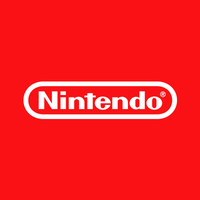New Licensing Opportunities for Publishers in Cloud Gaming: Part II
by Mathew Broughton on 20th Jul 2020 in News

In the second of this two-part series written exclusively for TheGamingEconomy, Nabil Laredj, Director of Business Development & Licensing at Blacknut, discusses how cloud gaming services are set to benefit publishers, as well as complement existing distribution channels.
Cloud gaming will give publishers a share of a much bigger audience
Which is fine if all you want to do is shift from physical publishing to digital, along with some new cloud-based bells and whistles. But there is a bigger opportunity for publishers because cloud gaming has the potential to reach beyond self-identified ‘gamers’, and out to people who see games as entertainment, and where choice and access is more important than 4K and 60FPS. Omdia (previously IHS Markit) forecast cloud gaming to grow to USD$2.5bn (£2.0bn) in 2023, showing just how much scope the technology has to grow the gaming audience.

Because Blacknut’s users are not that worried about playing the latest blockbusters (if they do, they probably already have a console or PC for these games anyway), the ‘Netflix for games’ approach is ideal, as it gives them lots of choice. This model is also good for publishers who are looking for incremental revenues on IP that has already earned back its development costs.
This is an audience that the games industry is not currently catering for, so streaming services are not just offering publishers a new revenue stream, but the gateway to a much broader family demographic (which is one reason why telcos are so attracted to cloud gaming as a value-added service). There is little cannibalisation because there is little crossover with the conventional ‘gamer’ audience that buy their games on launch day.
To illustrate this, a large proportion of our subscribers are not typical gamers; they spend an average of four hours a week gaming and are not looking to invest time in a new game every week. Our players are playing games on their mobiles, laptops and PCs and their smart TVs, in pretty equal amounts. The bulk of our subscribers play a small number of games, but on a regular basis. So for this demographic it’s ideal to offer them titles that are of proven quality which are anything from six months to three or four years old.
Cloud gaming adds more choice to the existing retail and distribution channels
Another question I am asked is whether streaming will disrupt the long-term economics of retail and distribution. That’s a difficult question to answer, both because we are only at the start of this technology, and also because the games industry is evolving so quickly. But my bet is that this is not a question of either/or, but one of combinations.
With streaming, a dedicated gamer can play games in high fidelity on a virtual PC; equally, someone who wants to play whilst mobile can sign up to a streaming service so they can get premium console and PC titles on their smartphone then get home and play the same games on their TV. It’s about creating services that cater to more people’s idea of what gaming is, and how those services can complement each other. That’s the only way we’ll get to the 3 billion gamers that Newzoo thinks we’ll have by the end of 2023.
Almost every publisher we’ve met with over the past 12-18 months recognises the potential of streaming as a new revenue channel. Some moved quickly to get their games onto multiple services, whilst some are still waiting to see how demand will grow. I suspect we will see more established publishers launching their catalogues on streaming services as the subscriber numbers go up, and the revenue opportunity becomes too compelling to ignore. With so much choice, we could see a real golden age of choice for consumers - bringing more people than ever before into the gaming economy.




Follow TheGamingEconomy